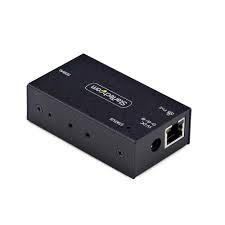Introduction:
In today’s fast-evolving digital landscape, connectivity is at the heart of innovation. From industrial automation to smart home devices, every system relies on seamless communication between machines and networks. However, many legacy devices still use serial communication interfaces like RS-232, RS-422, or RS-485, which were never designed for modern Ethernet networks. This is where the serial to Ethernet convertor comes into play — a powerful device that acts as a bridge between traditional serial equipment and modern IP-based networks.
A serial to Ethernet convertor enables older serial devices to transmit and receive data over Ethernet, allowing them to integrate smoothly into existing network infrastructures. It’s a practical, cost-effective, and reliable solution that extends the life and utility of legacy equipment in industrial, commercial, and automation settings.
What is a Serial to Ethernet Convertor?
A serial to Ethernet convertor (sometimes called a serial device server) is a networking device that translates data between serial and Ethernet protocols. It allows serial-based hardware, such as sensors, controllers, barcode scanners, and meters, to communicate with computers or other devices over a local area network (LAN) or even remotely via the internet.
In essence, it takes the data coming from a serial port, encapsulates it into TCP/IP packets, and transmits it over Ethernet. On the receiving end, the packets are reassembled into serial data for the destination device. This process enables systems that were once restricted to point-to-point serial communication to become part of an interconnected Ethernet environment.
Why Use a Serial to Ethernet Convertor?
Many industrial and commercial environments still depend on reliable but older equipment that uses serial communication. Replacing these systems with Ethernet-compatible hardware can be expensive and disruptive. A serial to Ethernet convertor offers a smarter alternative — it connects old and new technologies without the need for replacement.
Here are several reasons why businesses and engineers rely on this device:
-
Cost Efficiency: Instead of replacing existing serial devices, organizations can continue using them while upgrading network connectivity.
-
Remote Access: It enables remote monitoring and control of serial devices over the internet, improving flexibility and reducing maintenance visits.
-
Network Integration: Serial devices can be integrated into modern Ethernet or Wi-Fi networks for improved data sharing and centralized management.
-
Scalability: As networks grow, multiple convertors can be added without major infrastructure changes.
-
Extended Device Lifespan: It helps preserve investment in expensive legacy hardware by giving it a new communication interface.
How Does a Serial to Ethernet Convertor Work?
A serial to Ethernet convertor operates through a combination of hardware and software mechanisms that ensure smooth communication between devices using different data formats.
-
Serial Input: The device receives data through a serial port (RS-232, RS-422, or RS-485).
-
Protocol Conversion: The convertor’s internal processor converts the serial data into TCP/IP packets compatible with Ethernet networks.
-
Transmission: The encapsulated data is sent across the network to the target system.
-
Reconversion: The destination device or application receives the TCP/IP packets and converts them back into serial data.
Some advanced models also include features like virtual COM port software, which allows computers to recognize serial devices as if they were directly connected via physical COM ports.
See more: serial to ethernet adapter
Applications of Serial to Ethernet Convertors
The serial to Ethernet convertor has become a key component in many industries. Its versatility makes it suitable for numerous applications, including:
-
Industrial Automation: Connecting PLCs (Programmable Logic Controllers), sensors, and robotic systems to central monitoring networks.
-
Building Management Systems (BMS): Integrating HVAC controllers, lighting systems, and security devices into IP-based networks.
-
Energy and Utilities: Monitoring meters, transformers, and control panels in power plants or substations.
-
Transportation: Linking traffic lights, ticketing machines, and surveillance systems to centralized management servers.
-
Retail and POS Systems: Allowing barcode scanners, receipt printers, and cash registers to communicate with back-end databases.
-
Healthcare: Connecting legacy medical devices to hospital information systems for real-time monitoring.
This wide range of applications demonstrates the convertor’s adaptability and importance in ensuring smooth, unified communication across diverse systems.
Key Features of a Quality Serial to Ethernet Convertor
Not all convertors are created equal. When choosing a serial to Ethernet convertor, certain features define its reliability and performance:
-
Multiple Serial Ports: For connecting several devices simultaneously.
-
Data Encryption: Ensures secure transmission of sensitive information over networks.
-
Virtual COM Port Support: Simplifies configuration and device recognition on PCs.
-
Industrial-Grade Design: Durable casing, wide temperature range, and surge protection for harsh environments.
-
Flexible Mounting Options: Rack, DIN rail, or desktop installation.
-
Remote Management Tools: Web-based interfaces or mobile apps for configuration and monitoring.
-
Auto-recovery and Watchdog Functions: Maintain stable operation even during network interruptions.
Benefits of Using a Serial to Ethernet Convertor
The advantages of using a serial to Ethernet convertor go beyond basic connectivity. . The following are a few of the most noteworthy advantages:
-
Seamless Integration: It bridges the gap between outdated serial systems and modern Ethernet networks.
-
Improved Efficiency: Remote access allows technicians to diagnose and configure devices without being physically present.
-
Data Centralization: Serial devices can transmit data directly to servers or cloud platforms for analysis and storage.
-
Enhanced Reliability: Ethernet offers higher transmission speeds and better stability compared to serial connections.
-
Future-Proof Networking: Enables legacy equipment to stay relevant in an increasingly digital ecosystem.
Setting Up a Serial to Ethernet Convertor
Setting up a serial to Ethernet convertor is relatively simple and involves these general steps:
-
Connect your serial device to the convertor’s serial port.
-
Connect the convertor to your Ethernet network via a standard cable.
-
Power on the device and access its configuration interface (usually via a web browser).
-
Configure network settings such as IP address, baud rate, and communication mode.
-
Test the connection using software tools or network monitoring applications.
Conclusion
The serial to Ethernet convertor is more than just a networking accessory — it’s a vital bridge that connects the past to the present. By allowing legacy serial devices to integrate seamlessly with modern Ethernet networks, it helps industries maintain operational efficiency, reduce costs, and embrace digital transformation without replacing existing infrastructure.
See more blogs: Visit Here



